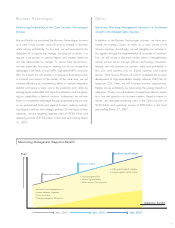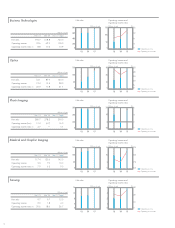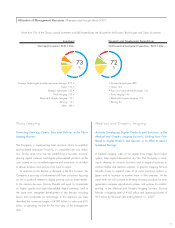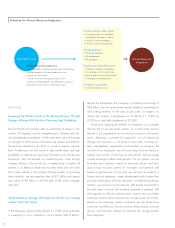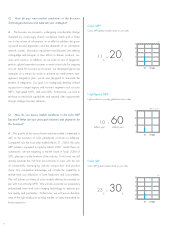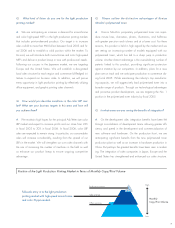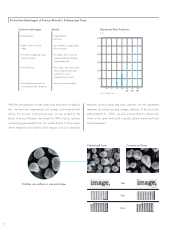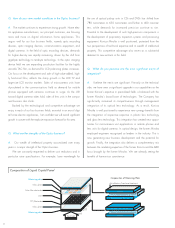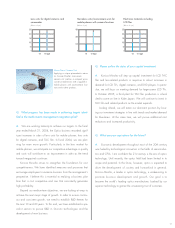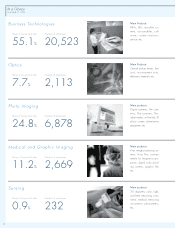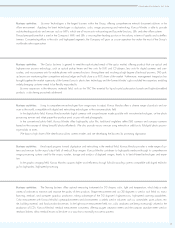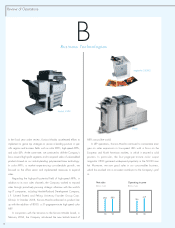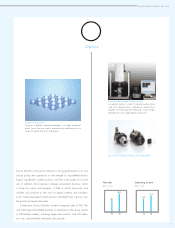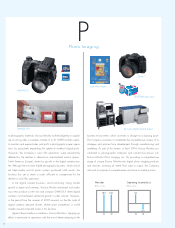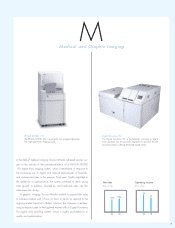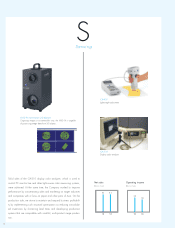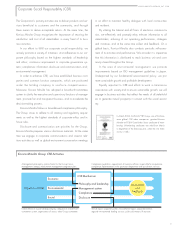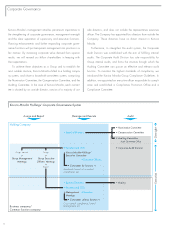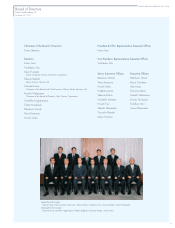Konica Minolta 2004 Annual Report Download - page 25
Download and view the complete annual report
Please find page 25 of the 2004 Konica Minolta annual report below. You can navigate through the pages in the report by either clicking on the pages listed below, or by using the keyword search tool below to find specific information within the annual report.
23
Microlens units/microcamera units for
mobile phones with camera functions
(Billions of yen)
Electronic materials including
LCD film
(Billions of yen)
’04
450
300
150
0
’07 Target
Lens units for digital cameras and
camcorders
(Billions of yen)
’04
250
200
150
100
50
0
’07 Target’04
250
200
150
100
50
0
’07 Target
Q. What progress has been made in achieving targets identi-
fied in the medium-term management integration plan?
A. We are working tirelessly to achieve our targets. In the fiscal
year ended March 31, 2004, the Optics business recorded signif-
icant increases in sales of lens units for mobile phones, lens units
for digital cameras, and TAC film. In fiscal 2004, we are plan-
ning for even more growth. Particularly in the lens market for
mobile phones, we anticipate our competitive advantage in quality
and costs will contribute to an improvement in sales as the trend
toward megapixels continues.
Konica Minolta strives to strengthen the foundation for cost
competitiveness. We have identified measures and processes that
encourage employees to examine business from the management’s
perspective. I believe this is essential to realizing a business plat-
form that is cost competitive and one that consistently generates
high profitability.
Beyond our medium-term objectives, we are looking at ways to
achieve the next major stage of growth. In order to ensure continu-
ous and consistent growth, we need to establish R&D themes for
the next 10 and 20 years. To this end, we have established a spe-
cialist section to pursue R&D in futuristic technologies and the
development of new business.
Q. Please outline the status of your capital investment.
A. Konica Minolta will step up capital investment for LCD TAC
film and lens-related products in response to robust increases in
demand for LCD TVs, digital cameras, and DVD players. In partic-
ular, we will focus on meeting demand for large-screen LCD TVs.
In October 2005, a third plant for TAC film production is sched-
uled to come on line in Kobe, Japan. We will continue to invest in
TAC film and related products as the market expands.
Looking ahead, we will retain our dominant position by focus-
ing our investment strategies in line with trends and market demand
for blue-lasers. At the same time, we will pursue additional cost
reductions and increased productivity.
Q. What are your aspirations for the future?
A. Economic development throughout most of the 20th century
was fueled by technological innovation in the fields of semiconduc-
tors and CPUs. I am confident the 21st century is the era of optics
technology. Until recently, the optics field had been limited in its
scope and potential. In the future, however, optics is expected to
drive the development of society and humankind in general.
Konica Minolta, a leader in optics technology, is endeavoring to
promote business development and growth. Our goal is to
become the world’s leading optics manufacturer, backed by our
superior technology to garner the unwavering trust of customers.
Micro-Zoom Camera Unit
Applying a unique piezoelectric actua-
tor, Konica Minolta’s micro-zoom
camera unit realizes a compact preci-
sion-drive mechanism, and is applied in
mobile phones with zoom-camera func-
tions and in other products.


